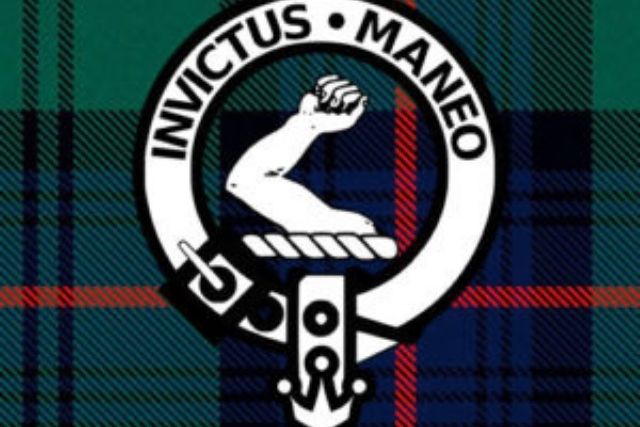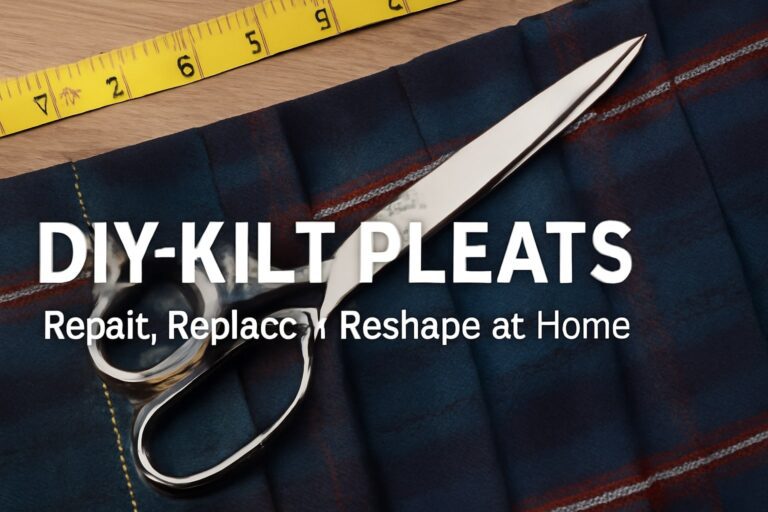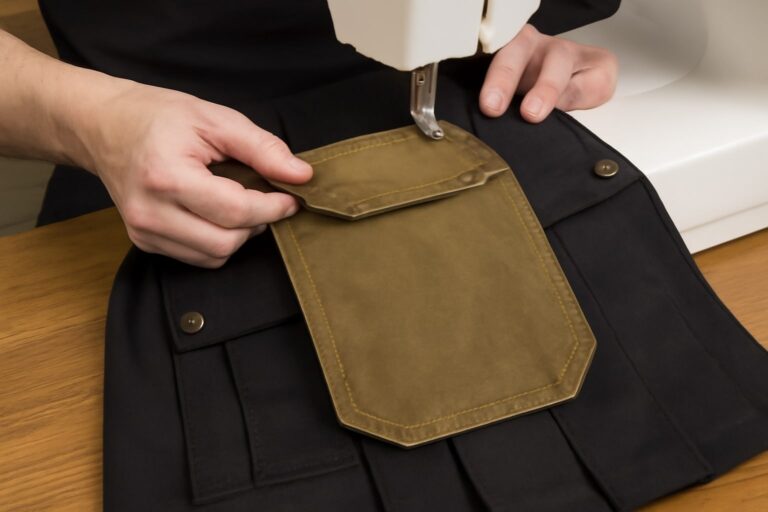When most people shop for kilts, they focus on fabric, color, or pleats. But behind every great kilt is an overlooked feature that defines its comfort, fit, and function—the hardware.
From traditional leather buckles to modern Velcro fasteners and snap buttons, your kilt’s fastening system plays a major role in how it performs in daily wear. Choosing the wrong hardware can mean loose fits, wardrobe malfunctions, or discomfort.
In this guide, we break down the pros, cons, and best uses of all major kilt hardware options—so you can buy, wear, or customize your next kilt with confidence.
Why Kilt Hardware Matters
Kilt hardware isn’t just decorative. It directly affects:
-
🔒 Security – Will it stay on during movement?
-
🧘 Comfort – Does it dig into your waist or hips?
-
🔁 Adjustability – Can you fine-tune the fit as your body or clothing layers change?
-
🛠️ Repairability – How easy is it to fix if something breaks?
Choosing the right hardware helps avoid costly adjustments or replacements—and ensures your kilt stays snug, stylish, and strong.
1. Traditional Leather Buckles
🔹 What They Are:
Two or three adjustable leather straps with metal buckles, typically placed on the side and waist of the kilt.
✅ Pros:
-
Authentic, traditional look
-
Strong and durable over time
-
Allows for multi-inch waist adjustment
-
Matches formal Highland dress
❌ Cons:
-
Takes time to fasten properly
-
Can dig into skin when worn tight
-
Susceptible to cracking or stretching if not conditioned
🔍 Best For:
-
Wool tartan kilts
-
Formal occasions
-
Buyers seeking heritage styling
2. 📎 Snap Buttons (Press Studs)
🔹 What They Are:
Metal snap fasteners—like those found on jackets or utility garments—used to hold pleats or close side flaps.
✅ Pros:
-
Fast to open and close
-
Low profile for a cleaner silhouette
-
Great for active movement (festivals, hiking)
❌ Cons:
-
May come undone if stressed or not aligned
-
Fixed placement—no adjustable sizing
-
Wear out faster than leather buckles
🔍 Best For:
-
Dance or cosplay kilts
-
Travel kilts where speed matters
3. 🎯 Velcro Closures
🔹 What They Are:
Wide Velcro straps (hook and loop) used in place of buckles or buttons to secure the kilt.
✅ Pros:
-
Quick on/off (ideal for people with limited mobility)
-
Ultra adjustable—great for layering or fluctuating waistlines
-
Lightweight and minimal
❌ Cons:
-
Can wear out over time
-
Less secure in high-movement or windy conditions
-
Often seen as less traditional or formal
🔍 Best For:
-
Beginner kilt wearers
-
Workwear and costume kilts
-
Sport or dance kilts
4. 🧷 Hybrid Hardware (Mixed Systems)
Some modern kilts use a combo of Velcro with a decorative buckle, or snap buttons with a hidden inner strap. These offer style with function.
Benefits:
-
Best of both worlds: speed + adjustability
-
Hidden security under visible tradition
-
Easy for everyday use without looking overly casual
5. What About Kilt Pins?
While buckles, snaps, and Velcro keep your kilt on, kilt pins complete the look. Placed at the bottom of the outer apron, a kilt pin adds weight and style, helping the fabric hang properly especially in windy weather.
Popular kilt pin styles:
-
Thistle, Celtic cross, or clan badge
-
Military crests or national symbols
-
Minimalist modern pins (for streetwear kilts)
-
Engraved nameplates or initials
Note: Kilt pins are mostly decorative. They shouldn’t be used to pin multiple layers together—doing so can restrict movement or cause tearing.
Comparison Chart: Kilt Hardware Types
| Feature | Leather Buckles | Snap Buttons | Velcro | Hybrid |
|---|---|---|---|---|
| Adjustability | High | Low | High | Medium |
| Speed | Low | High | Very High | High |
| Durability | High (if treated) | Medium | Medium | High |
| Style | Formal/Traditional | Casual | Sporty | Flexible |
| Maintenance | Leather care | Replaceable | May degrade | Depends on type |
How to Choose the Right Kilt Hardware
Ask yourself:
-
How often will I wear this kilt?
Daily wear may benefit from Velcro or snap buttons for speed. -
Do I want tradition or function?
Buckles = classic; Velcro = convenience. -
What’s my activity level?
For dancing, hiking, or working—consider hybrid or snaps. -
Am I dressing for formality?
Always go with leather straps and buckles for weddings or Highland dress.
Maintenance Tips for Kilt Hardware
-
Leather straps: Apply leather conditioner every 3–6 months
-
Snap buttons: Keep free of lint and oil lightly if sticky
-
Velcro: Remove debris with a fine-tooth comb; replace if worn
-
All types: Avoid over-tightening—can cause fabric strain or tearing
Custom Hardware Options at ScottFashion
At ScottFashion.com, we offer kilts with customizable hardware:
-
✅ Choose between buckle, snap, or Velcro when ordering
-
✅ Mix options with hybrid setups (e.g. snap + Velcro)
-
✅ Hardware replacements available for long-term customers
-
✅ Made-to-measure straps for secure comfort
FAQ’s
Q1: Can I replace my kilt’s buckles with Velcro or snaps?
Yes, many modern kilt makers allow hardware modifications. ScottFashion offers this as a custom service.
Q2: Which hardware is best for hot weather?
Snap or Velcro closures are lighter and more breathable under pressure.
Q3: Are leather straps vegan-friendly?
No, but we offer vegan leather alternatives upon request.
Q4: My Velcro no longer sticks—what can I do?
You can replace the Velcro strip or use an iron-on industrial-strength strip for reinforcement.



